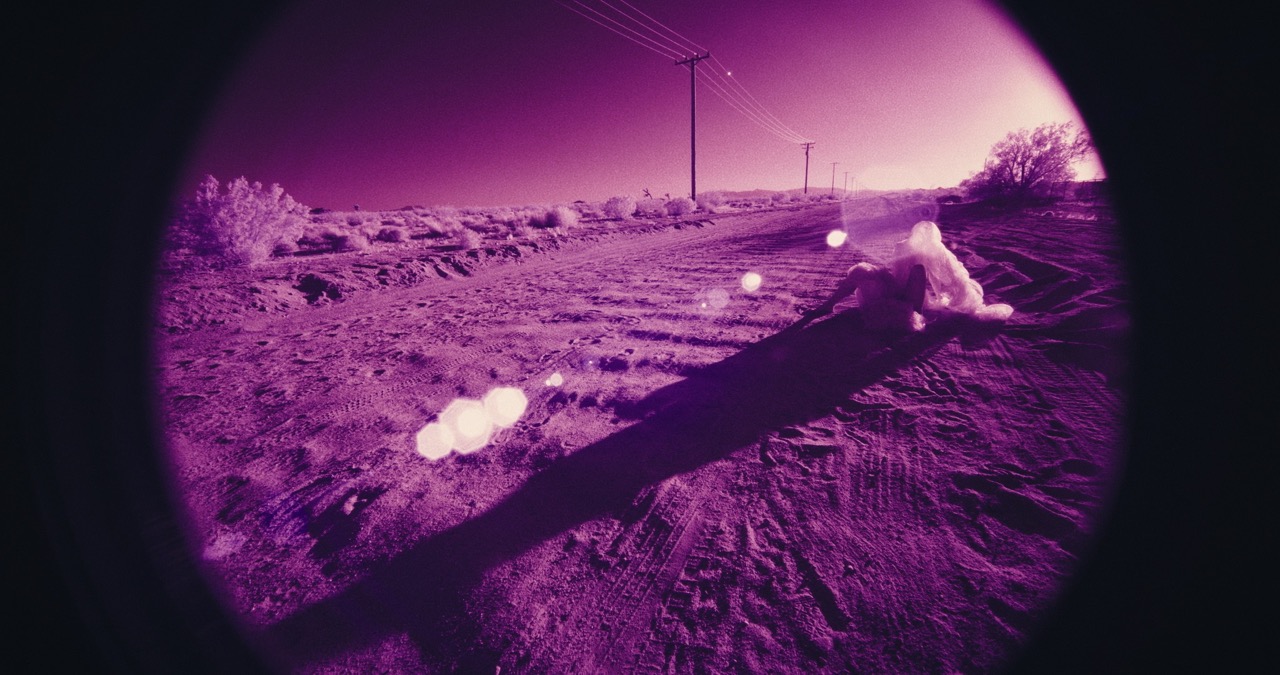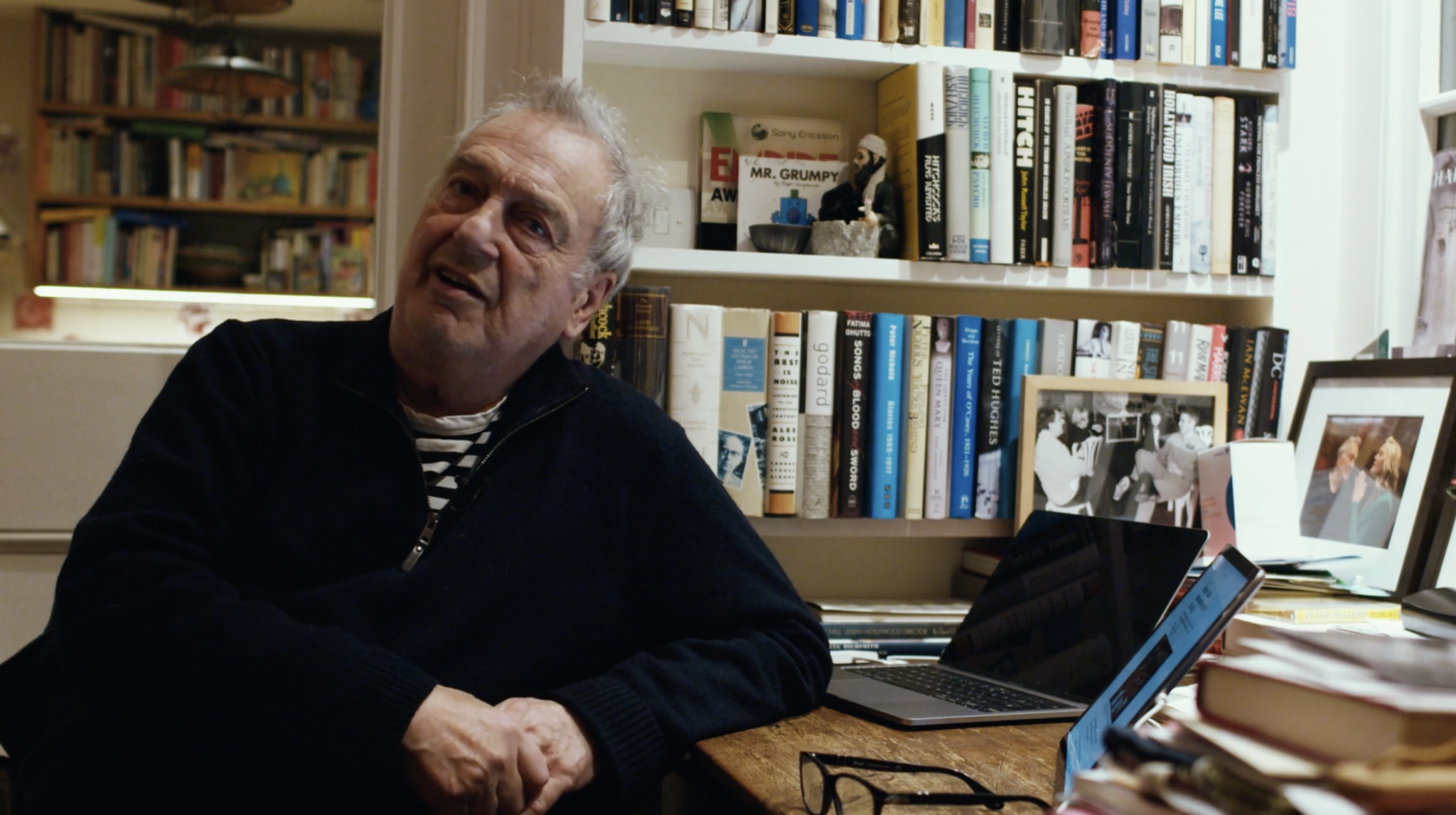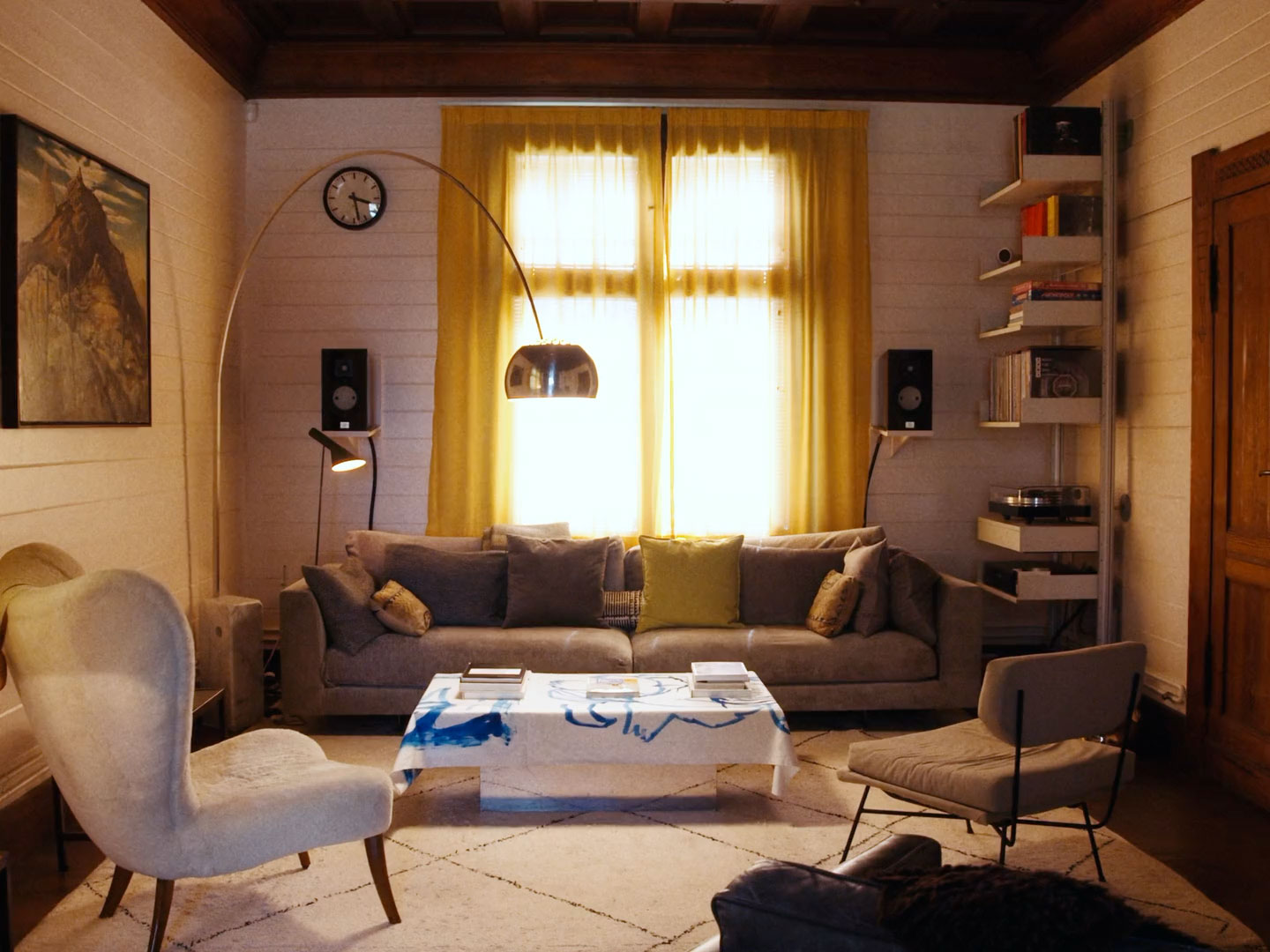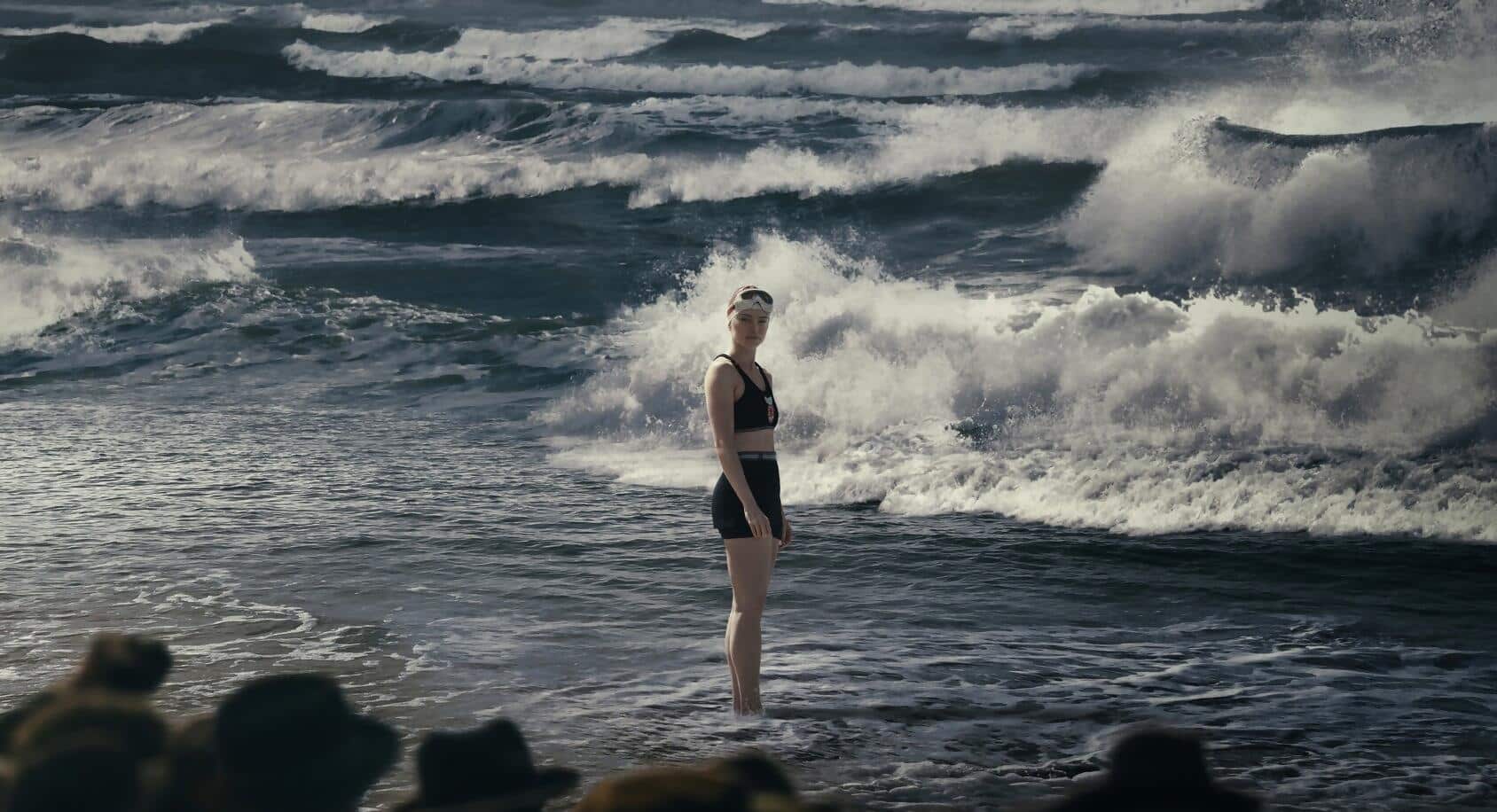
Joachim Rønning smiles at me, tucked into the mauve leather sofas of his Covent Garden editing studio . With the recent Summer heatwave, I tease him for his choice of a hot but stylish leather jacket. Rønning, an Oscar-nominated Norwegian director, is at ease however, having just finished up his morning editing Tron: Ares. Disney is a looming patron for the seasoned director. Editing his fourth movie for the company under a gigantic Never Mind The Bollocks poster (“It keeps me grounded,” he laughs) and a small Mickey Mouse toy at his mantelpiece, Rønning has just released the charming Young Woman and the Sea—his third feature with Disney. It’s this story that’s sparked my interest: a movie that focuses on the forgotten odyssey of 1920s Olympian swimmer Trudy Ederle who battles the waves to cross the English Channel for the first time as a woman. A seasoned sailor, Rønning quickly opens up on his life-long love of the ocean: and the joys, and frustrations, of filming so much of his lifework at sea.
Sam Murphy: Trudy is such a fascinating part of history, but your film was also the first time I’d ever heard about her. What were your first impressions of Trudy’s life?
Joachim Rønning: Well, I didn’t know her story either! So when I first read Jeff Nathanson script—almost 10 years ago—that was the first time I learned about Trudy and. I was shocked that I didn’t know about it and I almost felt an obligation to tell the world about her.
JR: She was just lost, lost to history. Which is mind-bending, because when it happened 100 years ago, it was such a world event.
SM: Trudy’s story also felt quite evocative of a Disney film with its dramatic highs and lows.
JR: It’s definitely up there in the Disney alley. There’s the triumph of the human spirit, it’s uplifting and inspirational. But I also feel like there are other studios that fits this bill. We used to make more of these movies, especially for the cinema and for the theater.
We tried for many, many years to make this movie happen. And finally, Disney+ went for it. We were always hoping somehow that it will find its way to the theater. We were thrilled when they decided to put it in the theater.
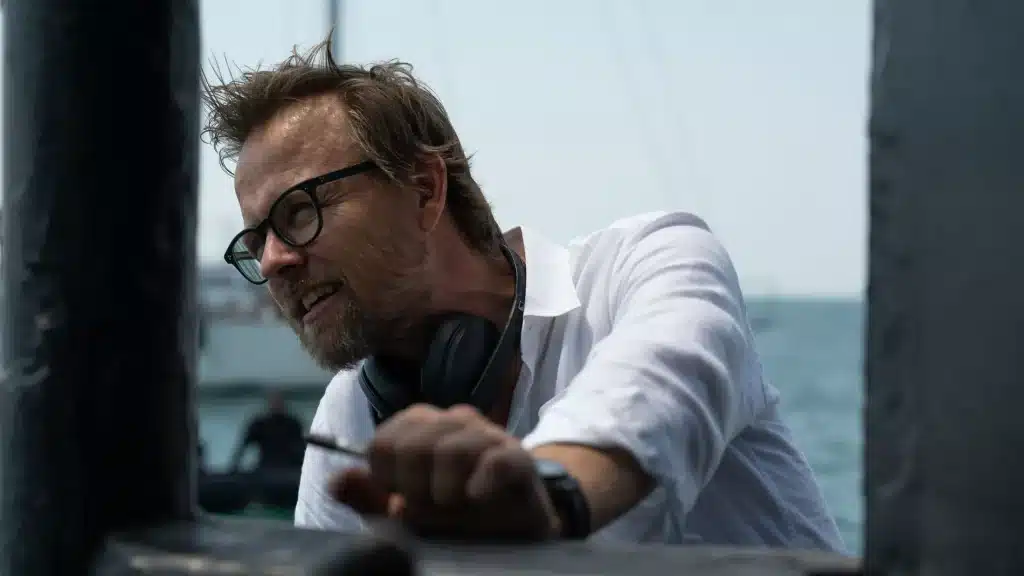
SM: It’s interesting then that streaming gave you the chance to tell this story in the first place…
JR: That’s the great part of streaming. A lot of a lot of stories are getting made first for streaming that wouldn’t be made anymore.
I wish we would make more drama and films like Young Woman and The Sea that could be directed straight for the theater. But it’s just another climate and I do understand the studios. They’d rather do the Deadpool movies and so on. I mean, I’m in the middle of movies right now…
SM: Before we go into that, how did you go about recreating this 1920s New York setting so authentically in Young Woman and the Sea?
JR: Our production designer Nora Ekberg and the DP Oscar Farah did a tremendous job in recapturing New York of the early 1900s. Sometimes it can be a little cliched creating a period New York thing. And we were all very keen on questions like: “How can we bring out the textures?” We were watching The Godfather and their reproductions and just constantly trying to be inspired by those kinds of films to create something that felt real.
SM: I’m also curious. You give a lot of screentime to Trudy’s parents and family—why?
JR: The movie is about family. And sometimes for an audience it can be a little hard to identify with a person like Trudy. She’s exceptional but you need to see her through somebody else’s eyes.
To tell the story of the time and what she went through, I used the family as a representation of that society. There’s always different characters: there’s the belief of the mother, there’s the strength and love of the sister, and then there’s the skepticism of the father. For Trudy’s father, I very much wanted him to feel like he was locked into the times.
So much has happened in the last 100 years. Back then women were not allowed to do any kind of sports. Even when swimming, it was in long gowns. Trudy’s feat, and her struggle, probably changed women’s sports forever.
SM: Speaking of a struggle—how did you handle directing so many ocean shots?
JR: That might be a reason why it took so long to make the movie. I wanted to be out on the ocean and shoot in there as much as possible. Real for real.
It’s cliche to say it, but the ocean is a character in this film. It’s a big character, an obstacle Trudy really needs to overcome. From early on, I warned Daisy Ridley [who would play Trudy], “I want to have you in the water with all the cameras there.” And she took on the challenge. She learned how to swim in the open ocean, she spent months and months training for the movie […] I tried to keep her in the sea as little as possible but she was basically in and out all day, and never complaining, even when her lips were turning blue.
When she was in the water, it was 67 degrees and she really had no protection against it. She was an amazing partner to have.
SM: From Pirates of the Caribbean to Kon-Tiki so much of your films are set at sea. Why do you keep going back?
JR: I grew up by the ocean. I love its beauty and its drama and its magic.
That’s always how I feel when I’m out there. But it’s also hard. Making any movie is hard, but you put it on the water and you add even more difficulties.
But I hope that the audience can somehow feel that.
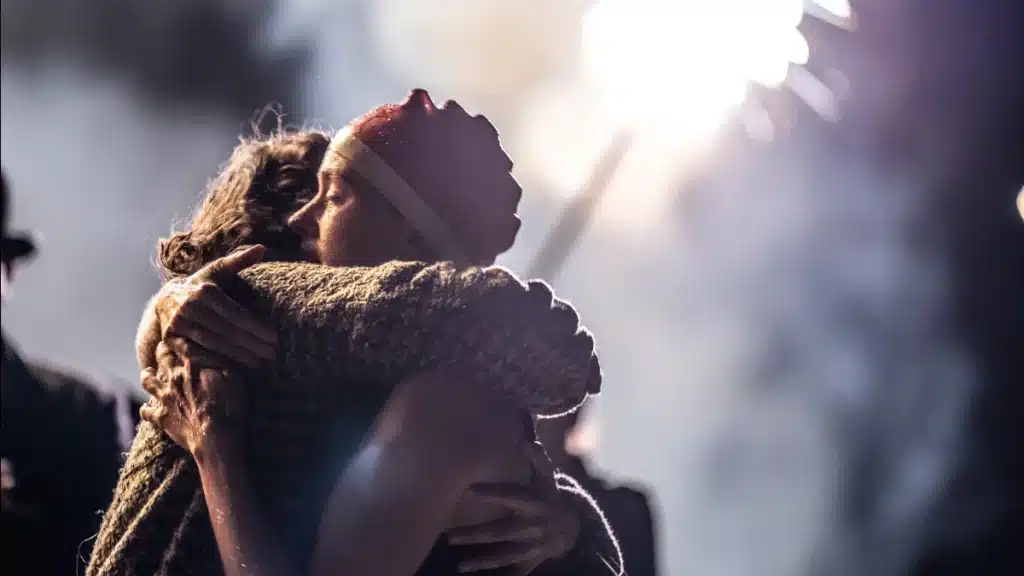
SM: Any particular challenges?
JR: In Young Woman and the Sea it’s stressful filming it, you know, because suddenly [Daisy] can get swept away by the current. My biggest fear was the boat propellers. She’s so vulnerable, so exposed in the water.
But I think it’s worth it because it also informs us a little bit about what Trudi went through in reality. And you know, Daisy when she’s there, she’s using that environment to get to her character. She’s not only swimming but also has to deliver her lines in water! It’s kind of chaotic, when you are out there, it’s shouting and you have the drones going up, at least two camera bolts. It’s as if everything is in the ocean.
But at the end of the day, you drive back to the land, you see the sun setting and you have the salt spray in your face. You’re a little burned and you just feel that, “Wow we captured something today, we wouldn’t have gotten that anywhere else.” It’s a surreal sense of accomplishment.
SM: You’re something of a darling at Disney, having made almost four films with them now. What’s that creative partnership like?
JR: It’s about people. I’ve had a very good relationship with the people at Disney. It hasn’t been like a conscious choice to make movies for that studio. But I have a very good experience because you hear horror stories about European directors being thrown into the whole studio system and I never had any of that.
It was just a very collaborative process. I try to be as collaborative as possible, especially on these big franchise movies because in those movies you need other voices. It’s a different kind of animal.
Young Woman and the Sea is a much more personal film for me. That’s the movie I want for my daughters.
But then when I’m making a movie like Tron, there’s a lot of other very powerful voices. Obviously it’s a very expensive project. It’s very important that…it goes well.
[Laughs]
SM: I’m curious you mentioned making a film for your daughter. Disney has such a long association with feminism and its heroines. It’s changed so much over the years from Sleepy Beauty to Mulan—where do you see Trudy sitting in that spectrum?
JR: I think Trudy was probably a perfect Disney movie, at least historically. And I think Disney was a perfect home for it.
They gave us a theatrical release based on the reception. I think they saw potential in that and it became part of a big campaign for them.

SM: But do you kind of see it as updating Disney’s feminism in some ways?
JR: Ah you never know. Nobody knows anything. Honestly it’s just a roller coaster. It could be one year that’s trendy. Another year, there’s something else. “Barbie made a billion, let’s make more Barbie movies.” Hollywood is always going to follow the box office.
But Disney has a great history of female heroes. Especially in the last 10 to 15 years.
SM: So what do you look for in a movie?
JR: What moves me is a movie’s emotional core. Something that has originated with me you know, not necessarily something I’ve written myself but like something original. A Woman and Sea has really been an inspirational journey for me. I’m doing my third sequel here in Tron. I’ve done a lot of those things and I’m very grateful for that. And I’ve had amazing experiences and worked with some of the best people in front of and behind the camera. But, you know, obviously those types of movies will always be a little less personal for me. We’ll see what comes next.


